Scientific Proven Testing to Help Public to Combat Coronavirus
The surging demand amid the coronavirus outbreak has created a severe global shortage of surgical masks. “All People Wearing Mask to Avoid Infection” are recommended by experts and drive people to flock to pharmacies to grab face masks, creating anxiety among HK people.
The scarcely supplied face masks have become basic necessities when people go outdoors, whether boarding MTR, going shopping, commuting to work and particularly visiting hospital, and one may not be even allowed to enter the premises for not wearing a face mask. Masks provide self-protection against infectious diseases transmitted by respiratory droplets. On the other hand, wearing masks are responsible to the society and others, especially for those having respiratory infection or coughing, in order to reduce the spread of disease. Owing to the persistent shortage, some people suggested to reuse surgical masks after sterilization and many people have begun making their own surgical masks at home. There have been a lot of methods of making DIY masks being posted on the Internet recently, but they have neither been tested scientifically nor have they been compared with general surgical masks in terms of filtering capacity, it is thus difficult to ascertain their effectiveness.
In a bid to help the public fighting the virus and alleviating anxiety in searching for masks, a taskforce was formed by the University of Hong Kong-Shenzhen Hospital (HKUSZH), Hong Kong Consumer Council, Hong Kong Applied Science and Technology Research Institute (ASTRI), Hong Kong Science Park (HKSP), and the Department of Architecture and Civil Engineering in the City University of Hong Kong (CityU). In the past weeks, lab tests were conducted on the efficacy of surgical mask after washing and sterilizing, and another test on the safety and effectiveness was also conducted on do-it-yourself (DIY) face mask which serves as a timely alternative for the public to alleviate the acute shortage of face masks.
Scientifically Proven: Tests Conducted at 2 Laboratories
Taking reference to the three-ply design of surgical face mask (water resistant outer layer, middle layer for filtration, inner layer for moisture absorbent), the Taskforce has assessed different materials in developing the DIY face mask. Three tests were conducted in the laboratories of the CUHK and the HKSP:
- Scan the fiber structure under an electronic microscope;
- Examine the efficacy in filtering aerosol;
- Cough simulation test with fluorescent solution
The tests conducted by the Taskforce covered 2 aspects: re-using surgical masks and testing DIY face masks.
1. Re-using surgical masks
The test on re-using surgical masks included washing and sterilizing the surgical masks (spraying 75% alcohol hand rub on the outer layer and washing surgical mask with 60°C soap water). Examination under an electronic microscope revealed that the outer layer of the surgical mask was damaged, losing its filtration and water-resistant functions. The fiber in the middle layer was also damaged, shrunk and deformed that adversely affected the filtration ability and lost its protection.
The Taskforce alerted the public to avoid washing or sterilizing any part of the surgical masks using water, alcohol, detergents, hand wash, soap or any kind of sterilizations.
(Image 1) - water resistant outer layer of a standard surgical mask
(Image under an electronic microscope, 100x)

(Image 2) – the water resistant outer layer was damaged after alcohol sterilization (Image under an electronic microscope, 100x)
(Image 3) – the water resistant layer shrunk after damaged after alcohol sterilization washing with 60°C soap water (Image under an electronic microscope, 100x)

(Image 4) – middle layer for filtration of a standard surgical mask (Image under an under an electronic microscope, 100x)

(Image 5) – the middle layer was damaged after alcohol sterilization (Image under an electronic microscope, 100x)

(Image 6) – the middle layer was shrunk and deformed after washing with 60°C soap water (Image under an electronic microscope, 100x)

2. DIY masks
Reference has been made on the three-ply design of surgical masks in the development of the DIY face masks (water-resistant outer layer, middle layer for filtration, inner layer for moisture absorbent). Moreover, 5 factors on material selection should be met, namely safety, easy to buy, easy to find, easy to do and easy to wear, to assure the protective function of the home-made face masks and give public a peace of mind to buy readily available household items in making the face masks.
- Safety – in compliance with hygiene standard in food handling
- Easy to buy – low-cost
- Easy to find – common household items
- Easy to do – simple to make
- Easy to wear – air permeable with comfort
Reasons of other materials not meeting the 5 factors for considerations:
| Safety | Easy to buy | Easy to find | Easy to do | Easy to wear | |
| Plastic Wrap | X | √ | √ | √ | X |
| Dust Cloth | X | √ | X | √ | √ |
| Air-conditioner filter paper | X | √ | X | √ | √ |
| Gore-Tex Protective fabric | √ | X | X | X | √ |
| Plastic Bucket | X | √ | √ | X | X |
| Cotton Cloth | √ | √ | X | X | √ |
After analysis, the task force recommended the following materials:
1. Water-resistant outer layer - Transparent plastic file folder is an optimum choice for face shield (or use sun visor or other transparent plastic element made of safe material). To achieve the water-resistant function as a surgical mask, transparent plastic file folder is recommended by the Taskforce to be used as face shield. In a cough simulation using fluorescent solution, DIY face mask is able to ward off droplets. The cost of a transparent plastic file folder is around HK$2 and it is washable and re-usable.
(Image 7) Fluorescence spots showed the protective shield can help prevent the spread of droplets


2.Middle layer for filtration – Kitchen paper. Generally, kitchen paper towels meet the hygiene standard in food handling. HKSP scanned kitchen paper towel under electronic microscope and revealed that the fabric size, gaps and layout of kitchen paper towel are similar to that of the middle layer of surgical mask.
(Image 8) Comparison of fabric size and gaps of a surgical mask’s middle layer for filtration (Image under an electronic microscope, 100x)

(Image 9) Comparison of fabric size and gaps of kitchen paper (Image under an electronic microscope, 100x)
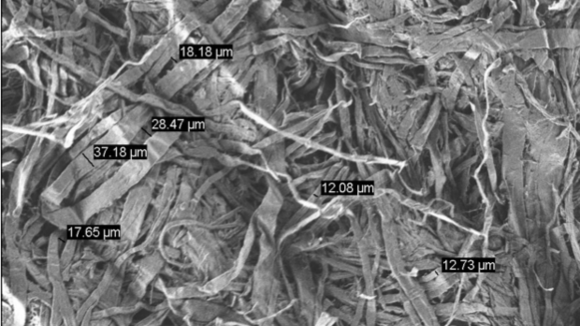
3.Inner layer for moisture absorbent – 3-ply / 4-ply pocket / box tissue
Facial tissue is hygienic and soft with strong water absorption. It is suitable for use as the inner layer of face mask. Once the material has been confirmed, the Taskforce examined the filtration efficiency of DIY masks made by different materials.

It is scientifically proven that DIY face mask with one facial tissue (inner layer on the face) and two kitchen paper towels as the outer layer achieved over 90% function of surgical mask in terms of filtration of 20-200nm aerosol. The Taskforce recommends that the public can use the above materials to make DIY face mask in time of acute shortage of surgical masks. The cost of a plastic folder as face shield is around HK$2 and it is re-usable after sterilization. The cost of one-off DIY face mask is around HK$0.2 to HK$0.3.

Tips on making and using DIY mask
- Clean your hands thoroughly with handwash and water or alcohol-based hand rub before making and wearing the face mask;
- When leaving home, put a few face masks in a re-sealable zipper storage bag for temporary storage and replacement;
- When wearing a DIY face mask, the inner layer with facial tissue should cover the nose and mouth with kitchen paper towel facing outward. Replace a new DIY face mask timely, say one or two hours, or whenever the facial tissue is wet;
- Never re-use DIY face mask;
- Clean your hands before taking off protective gear. When taking off protective gear at home, get sanitizer readily available. Remove the transparent plastic file folder first and then clean the hands, followed by taking off the DIY face mask that should be discarded in a lidded rubbish bin. Thereafter, wash hands again immediately.;
- Never re-use the material of DIY face mask for other cleaning purposes such as wiping kitchen or bathroom;
- Used plastic file folder should be sterilized with 1:49 diluted household bleach, alcohol-based sanitizer, handwash or dishwashing solution and rinse with water before re-using it. If the plastic file folder is contaminated or broken, do not re-use it. Discard the contaminated plastic file folder in a lidded rubbish bin and wash hands again immediately;
- If you replace face mask in the street, put the used face mask in a sealed bag and discard it in a rubbish bin or bring it home for disposal. Do not litter;
- Put on a surgical mask if you are visiting a high risk venue such as hospital or clinic, or when you have any symptoms of upper respiratory tract infection. Seek medical advice immediately if feeling unwell, showing suspected signs of infection or having any of upper respiratory tract infection.

The DIY Mask “Step-by-Step” Video:
The University of Hong Kong – Shenzhen Hospital made special thanks to organisations involved:
Department of Architecture and Civil Engineering, The City University of Hong Kong
Consumer Council
Hong Kong Applied Science and Technology Research Institute (ASTRI)
Hong Kong Science and Technology Parks Corporation (HKSTP)
Appendix – DIY Mask Step by Step Illustration
(Image 1) Wash your hands thoroughly and clean your materials
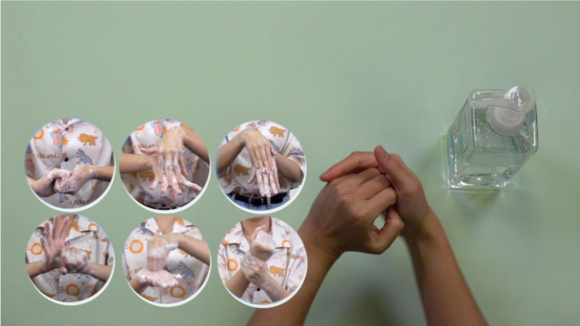

(Image 2) Use 2 different brands of kitchen paper or overlap 2 pieces of kitchen paper (the same brand) 90 degrees (avoid overlapping the pattern on the kitchen paper as this would reduce its filtering function) to form the filter layer of a mask
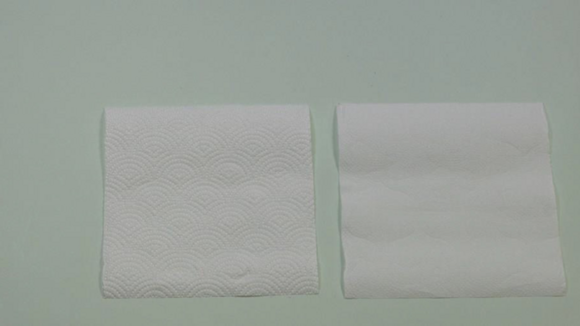
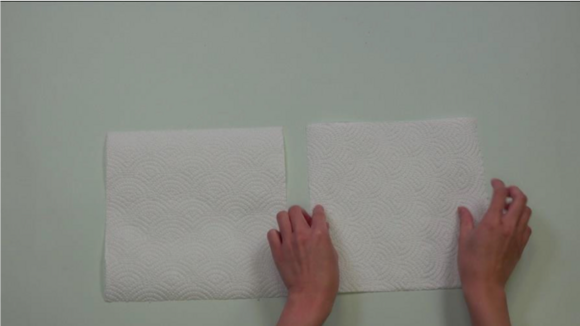
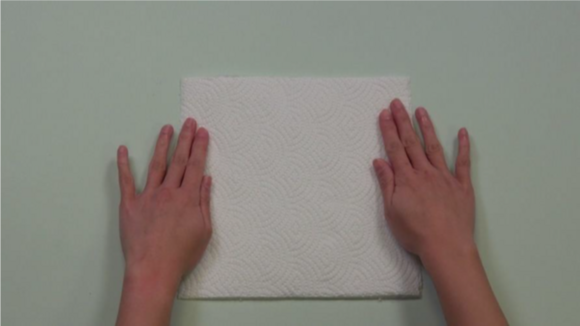
(Image 3) Place a piece of thick tissue paper on top of the kitchen paper as the inner layer of the mask, to form the water-absorbing layer of the face mask

(Image 4) Cut the stack of paper into two. Use an adhesive tape of 2-inch wide to seal off the two sides of the mask
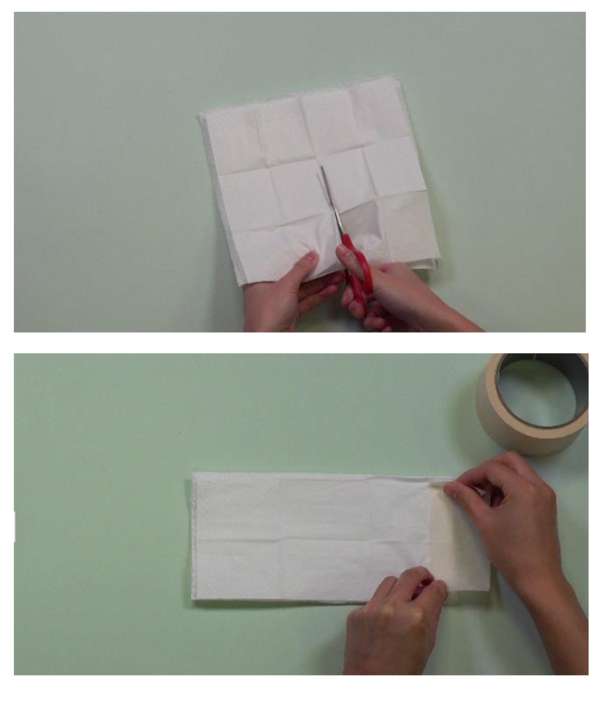
(Image 5) Punch two holes on each sealed side
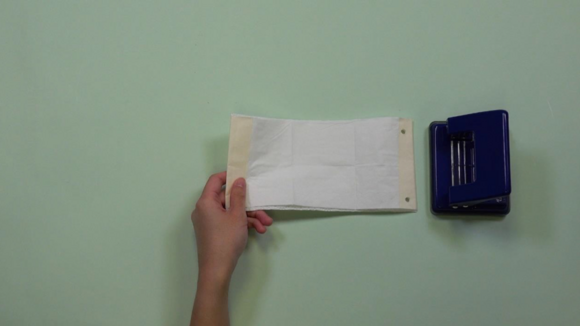
(Image 6) Attach the plastic-coated wire with paper tape to the top edge of the mask to make the nose bridge wire. Glasses can be used to fix the position of nose bridge if no such wires available.
Note: Do not use metallic wires without plastic-coating to avoid the risk of hurting eyes or face.
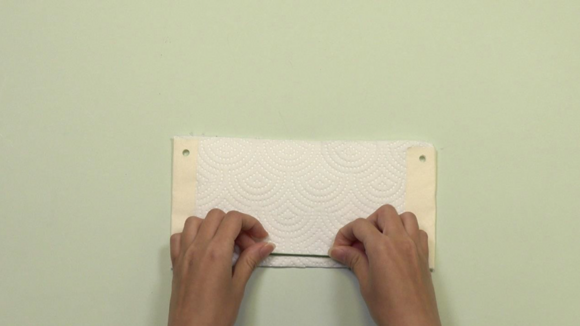
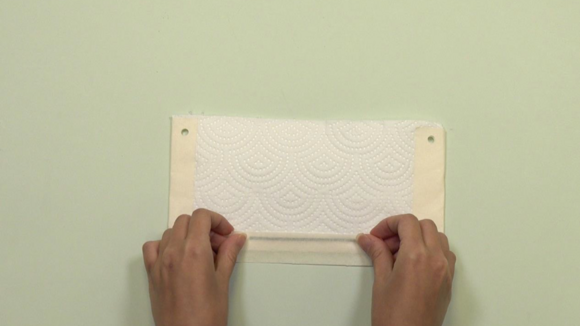
(Image 7) Tie 4 rubber bands/strings through the holes on the mask’s sides and adjust the length. (Ensure the face mask fit properly over the face. Not too tight nor too loose.)
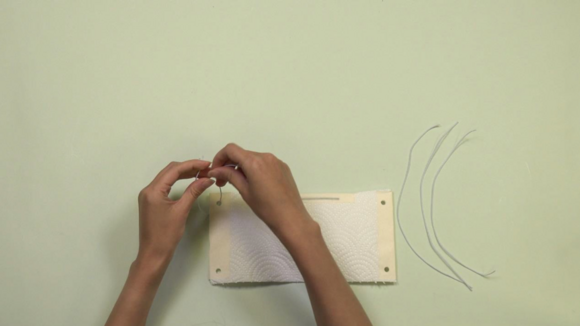
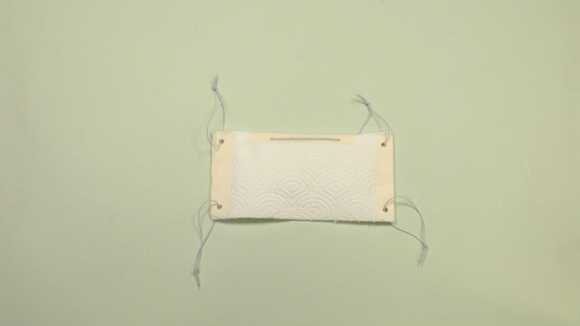
(Image 8) Cut the transparent plastic file folder into half, to serve as the waterproof shield of the face mask
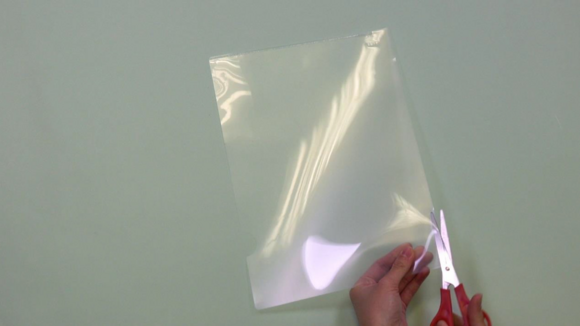
(Image 9) Attach one piece on the edge of the glasses with binder clips to block droplets as far as possible. If you don’t wear glasses, punch two holes on the upper left and right corners of the plastic film and tie rubber/strings through the holes, and then put the plastic film near the forehead (with holes on the upper part). Finally, fasten the rubber bands on the left and right hand side to fix the position.
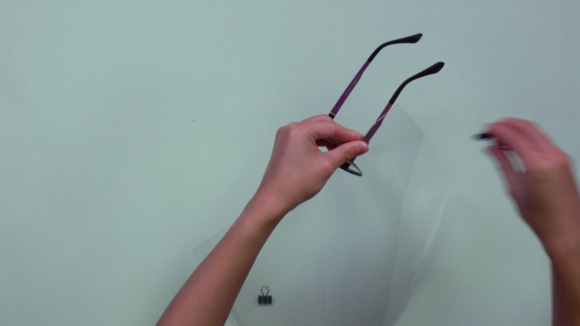
(Image 10) If there is no adhesive tape, use stapler to fix rubber bands/strings. The flat surface of the staple should be close to the face to avoid scratching hand or face.
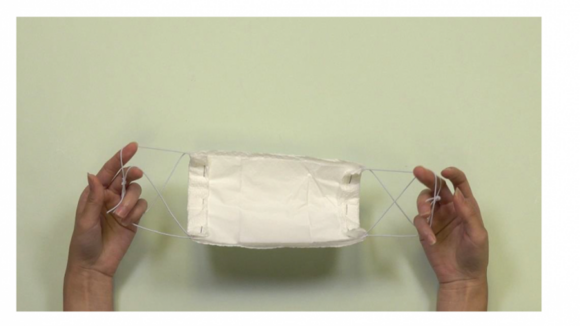
(Image 11) Finished Version
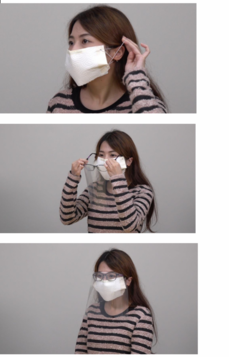
For more details, please click:


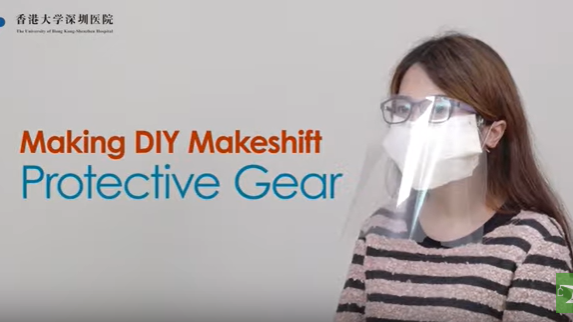


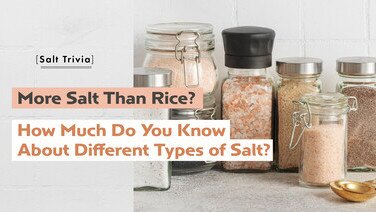
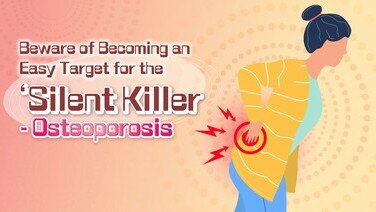
![[Handwashing Cold Knowledge] Debunking 4 common handwashing myths](/f/guide_detail/409326/376c212/43_4%E5%80%8B%E6%B4%97%E6%89%8B%E5%B8%B8%E8%A6%8B%E8%BF%B7%E6%80%9D_Eng.jpg)



